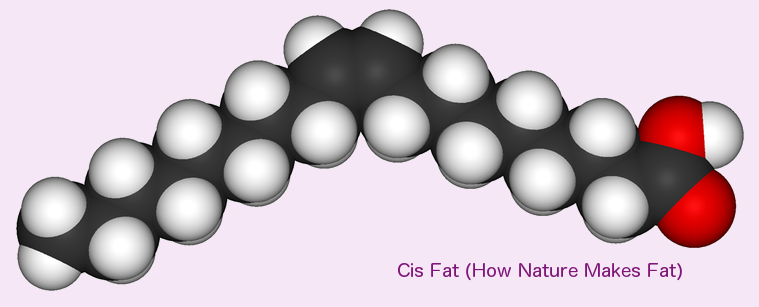Trans Fat made the headlines yesterday in the US, as the FDA announced it was taking steps to further reduce trans fats in processed foods. Most of us know Trans Fat is bad, but we may not realize the extent of the health threat, and how far behind fixing this the FDA’s current action is.
Trans Fat: What Me Worry?
What is the problem with Trans Fat? In the simplest terms, Trans Fat:
- increases bad cholesterol
- decreases good cholesterol
- increases the risk of cardiovascular disease, infertility, endometriosis, gallstones, Alzheimer’s disease, diabetes and some cancers
What is the Alternative to Trans Fat?
A dilemma, by definition, has to have at least two choices. In this case there are three:
- Trans Fat
- Cis Fat
- Saturated Fat
Trans Fat and Cis Fat are both unsaturated fatty acids. Trans fat is rarely found in nature. Trace levels can be found in meat and dairy products from ruminants, like sheep and cows, but these tiny amounts are tolerated in a normal diet. The majority of unsaturated fat found in nature is Cis Fat.
It turns out that the two types of fats have different shapes, and this may be the problem. The enzymes we use to metabolize fats fit like a lock and key with the fat molecules. When the fat molecules don’t fit, they gum up the entire operation.
The Shape of Fat
The shape of fat that I treat in my San Francisco Bay Area Plastic Surgery office is macroscopically globular. My Liposuction cannulas work equally well to remove disproportionate Trans and Cis Fat. On a microscopic level, however, the difference is obvious.
Saturated Fat

Saturated Fat: Octadecanoic Acid (Stearic Acid or Stearate) has a carbon backbone completely filled with hydrogen atoms. All carbon bonds are single bonds, and the backbone can rotate freely.
Saturated Fat: When we think saturated we think soaking wet. When fat is saturated, its carbon backbone is saturated with hydrogen atoms. Since all the carbon bonds are single bonds they can rotate, and the molecule remains flexible. While saturated fats are not the healthiest fats, they are found naturally, and our body can metabolize them.
Cis Fat

Cis Fat (Oleic Acid) is a monounsaturated fatty acid found naturally in both vegetable and animal fat.
Cis Fat is an unsaturated fat. Since the carbon backbone is not saturated with hydrogen, at least one double bond is found in the carbon chain. Oleic Acid, shown above, is a monounsaturated fatty acid, and has only one double bond. Oleic Acid is more specifically an Omega-9 fatty acid. This means the double bond is the ninth bond from the methyl end (the red end) of the fatty acid. In the picture above, the double bond causes the obvious bend in the molecule at its midpoint.
A Cis molecule has both long chains attached to the same side of the double bond. Nature “hand-makes” each molecule with enzymes that form the Cis configuration exclusively, and these are the fat molecules our bodies have evolved to digest. Like a key in a lock, the bent Cis Fat fits the enzymes in our metabolic pathways, and efficiently releases it’s energy.
Trans Fat

Trans Fat (Elaidic Acid) is also monounsaturated, but this shape is found in only trace amounts in nature.
When fats are partially hydrogenated in a laboratory, the hydrogen atoms are added randomly to polyunsaturated fats, fats with many double bonds. Unlike enzymatic production, which produces only Cis Fat, chemical production forms both the Cis and Trans Fat orientations.
Trans Fat is straight across the inflexible double bonds, and this “unnatural” shape no longer fits well in the enzymes we use to digest it. The result is a corruption of fat metabolism, causing an increase in bad cholesterol and a decrease in good cholesterol.
World Wide Response
This is not new information, and many countries around the world, and local municipalities have banned the high levels of Trans Fat in processed foods. In September of 2011, the World Health Organization (WHO) published a systematic review of public policies designed to reduce dietary trans fat. The study showed that the policies were effective. Bans were much more effective than labeling requirements, and national bans were more effective than local ones.
US Reduction in Trans Fats
The health benefits of avoiding Trans Fat are well documented. After mandatory US labeling requirements, there was a 58% reduction in TFA levels in blood plasma of volunteers. This is a testament to informed self-regulation. With a mandatory ban, the levels should drop to zero without another thought.
Fat Molecules courtesy of Wikipedia.
Previous Post Next Post